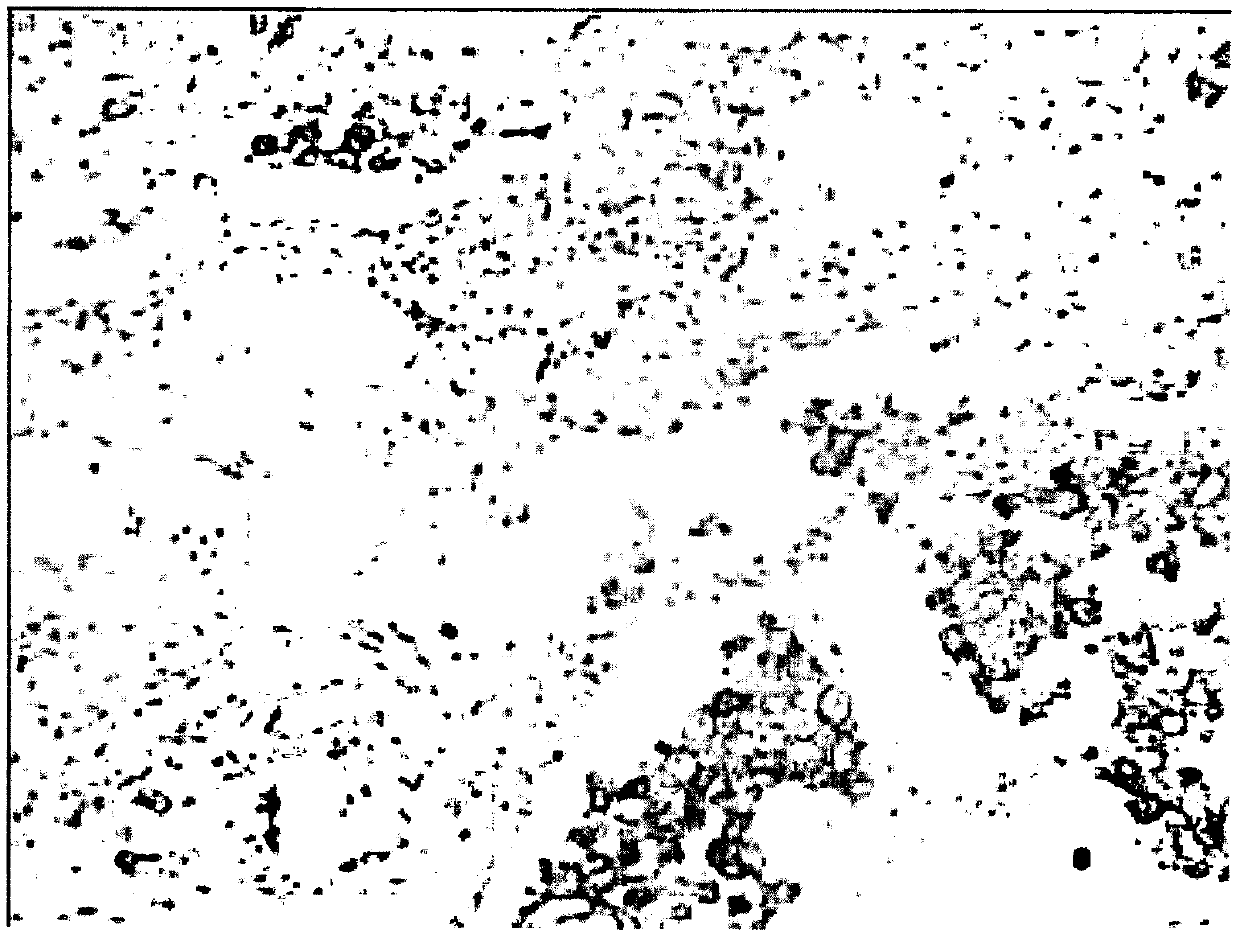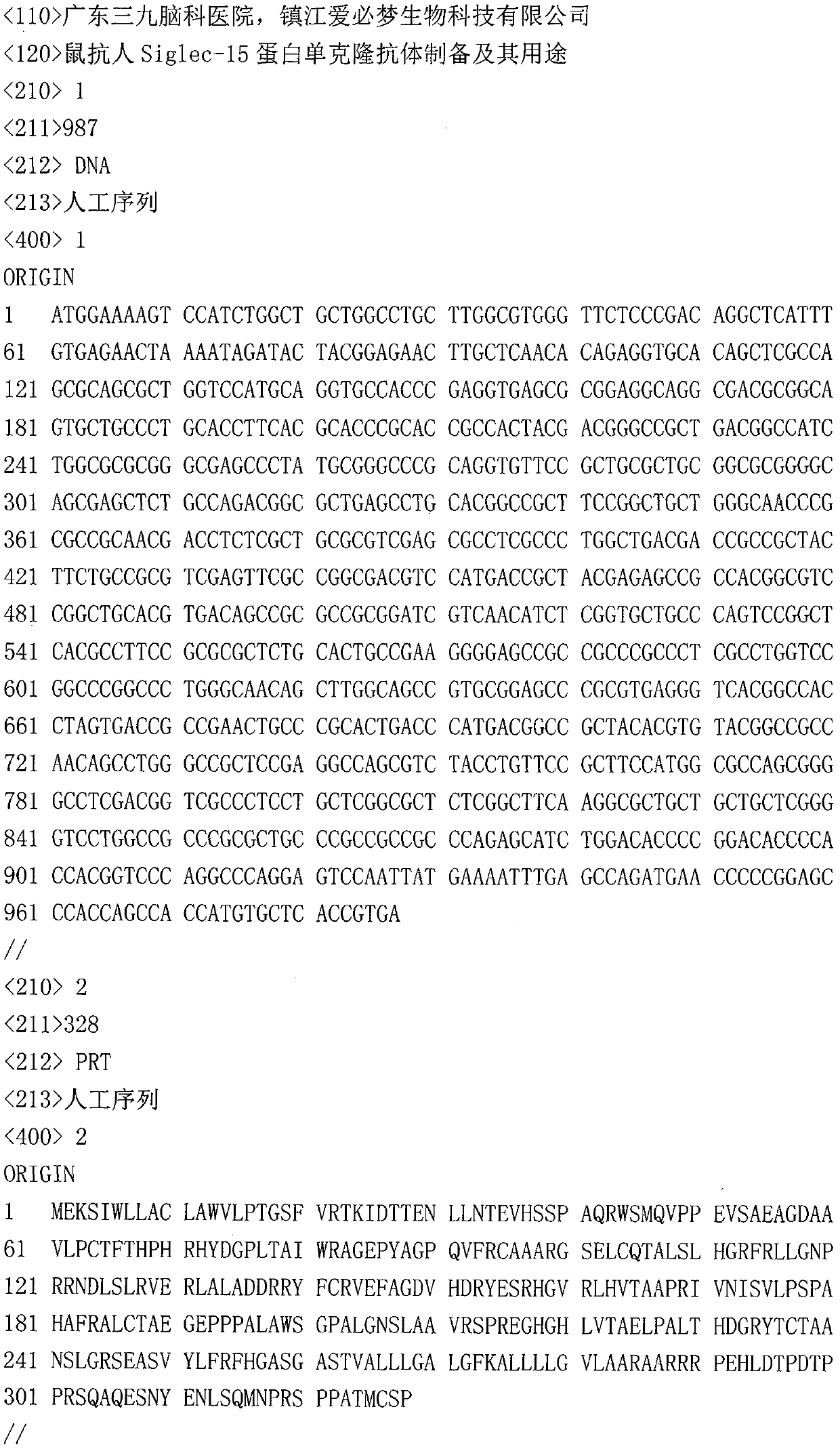Preparation and application of mouse monoclonal antibody against human Siglec-15 protein
A monoclonal antibody, mouse anti-human technology, applied in the biological field, can solve the problems that cannot be used in clinical inspection, and achieve the effect of improving specificity and reliability
- Summary
- Abstract
- Description
- Claims
- Application Information
AI Technical Summary
Problems solved by technology
Method used
Image
Examples
Embodiment 1
[0022] Example 1 Preparation of anti-Siglec-15 monoclonal antibody
[0023] 1. Preparation of immune source: According to the sequence information of Siglec-15 gene (NM_213602.2), order and synthesize human Siglec-15 polypeptide with N-terminal BSA sequence, which is used to immunize experimental animals and screen positive clones by ELISA.
[0024] 2. Animal immunization: the above-mentioned purified Siglec-15 polypeptide was emulsified with complete Freund's adjuvant, and immunized 6-8 week-old BALB / c mice by subcutaneous or intraperitoneal injection. The second immunization was carried out, emulsified with incomplete Freund's adjuvant, and the immunization dose was 50 μg per mouse. After the two immunizations, the tail blood was taken to measure the serum titer by ELISA gradient dilution; according to the results, it was determined whether to boost the immunization, and the mouse with the highest antibody titer was selected for cell fusion.
[0025] 2. Cell fusion: the mye...
Embodiment 2
[0029] Example 2 Immunohistochemical experiments using the monoclonal antibody of the present invention as the primary antibody
[0030] 1. Sampling 24 different types of cancer tissues to make tissue microarrays, and slice them with a Leica RM2235 tissue slicer with a thickness of 4 μm;
[0031] 2. Use the Leica BondMax immunohistochemical automatic staining machine to carry out immunohistochemical staining test on the antibody of the present invention, using the dewaxing and hydration conditions that come with the machine. The specific steps are: incubate at 60°C for 30min, wash with dewaxing solution (Leica) 3 times. For antigen retrieval, antigen retrieval solution 2 (ER2, Leica) was used and incubated at 100°C for 30 min. The antibody of the present invention was used as the primary antibody, diluted with antibody diluent (Leica) to a final concentration of 1.0 μg / ml, 150 μl. The antibody was incubated at room temperature for 30 min. Use 150 μl of matching secondary an...
Embodiment 3
[0034] Example 3 Specific detection of the monoclonal antibody of the present invention
[0035] The antibody of the present invention was used to detect the 96-well plate (Her-2) pre-coated with irrelevant antigens by ELISA, and the result was negative.
PUM
| Property | Measurement | Unit |
|---|---|---|
| thickness | aaaaa | aaaaa |
Abstract
Description
Claims
Application Information
 Login to View More
Login to View More - R&D
- Intellectual Property
- Life Sciences
- Materials
- Tech Scout
- Unparalleled Data Quality
- Higher Quality Content
- 60% Fewer Hallucinations
Browse by: Latest US Patents, China's latest patents, Technical Efficacy Thesaurus, Application Domain, Technology Topic, Popular Technical Reports.
© 2025 PatSnap. All rights reserved.Legal|Privacy policy|Modern Slavery Act Transparency Statement|Sitemap|About US| Contact US: help@patsnap.com



